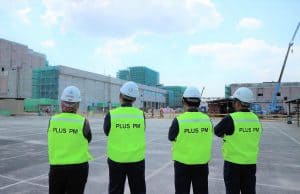High Rise Building Safety Evacuation – Frequently Asked Questions (FAQ)2/3
4月 13, 2015
4. If stair travel is potentially dangerous, are there alternatives?
The construction, fire protection and life safety systems installed in high-rise buildings,
including automatic sprinkler protection, are designed to control a fire so as to lessen the
need to evacuate all occupants to the street level.
The occupants of the fire floor and floors immediately above and below it should immediately
use the exit stairs to descend to a floor level that is at least a few floors
below the fire floor.
The occupants can then reenter the occupied space on those safe floors to await
further instructions.
5. If exiting down stairs takes so long, am I better off going up to the roof
and waiting to be rescued there?
No. Many of us have seen dramatic video of helicopters picking up occupants
from the roof of a burning building.
This is an extraordinarily dangerous procedure for the occupants,
the pilots and firefighters who may be in the building. First,
a helicopter may not come to rescue you, thus ascending to the roof instead of
descending to grade may have wasted valuable time.
This is not a standard procedure in the U.S., or in most foreign countries.
In severe fires, the large thermal currents, generated by the heat from the fire,
can cause the helicopter to be buffeted up or down, making it hard to control.
The resulting down thrust from the helicopter rotor can force smoke and super-heated
air on top of fire suppression personnel.
Most building designs incorporate numerous features that direct occupants
to the street or grade level for evacuation purposes.
6. Can I use the elevator?
It is never appropriate to use the elevator during a fire or similar
building emergency, even in a two-story building. When a fire occurs,
elevators are designed to be recalled to a designated floor, normally the lobby.
In unusual circumstances, an elevator malfunction may cause the elevator to
travel to the fire floor itself, thus exposing occupants to the fire.
Elevator shafts may also allow some smoke to enter the shaft and migrate toward
the roof of the building. Any occupants of the elevator would be exposed to that smoke.
7. What procedures should be applied for people in a wheelchair or with
other disabilities that affect mobility?
Able-bodied as well as disabled occupants must be covered under any written procedures.
If your floor has to be evacuated, you should plan to horizontally relocate to a refuge area.
In buildings with automatic fire sprinkler protection,
this may simply be to an adjacent compartment or office space.
In other cases, your building may be provided with areas of refuge.
These spaces may be located as stand-alone, barrier compartments on the floor,
or they may consist of oversized landings in stairwells. Regardless of which feature you have,
your plan includes waiting in one of the designated spaces until fire department personnel
can remove you. Often times, these spaces are provided with a two-way
communication device so you can give rescue personnel your location.
Your work environment may also supplement this procedure with a “buddy” system.
In this case, you need to anticipate situations where the “buddy”
may not be available in an emergency. In every case, and regardless of one’s abilities,
if you have any questions about your building’s plan or how you fit into it,
you should ask your employer for detailed information and request a role for those
with disabilities in crafting the plan.
8. If I stay and then the situation becomes untenable and I am trapped,
should I break a window? Should I jump?
If you are trapped in a high-rise building, try to locate yourself in an area
where you can close the door and seal the cracks to keep smoke out.
Use a telephone to call the fire department and report your exact location
in the building. Try to be patient.
Emergency rescue of high-rise building occupants can take a long time.
You can signal your position to rescue personnel from a window using a light-colored cloth,
but it is not advisable to break a window. If you can open the window slightly,
it is generally safe to do so to allow fresh air in, but be prepared to close
it if smoke comes in.
A broken window cannot be adjusted to block smoke from pouring in.
Finally,
falling glass from a broken window can sever fire hoses and severely injure rescue
and suppression personnel below.
It is very dangerous to use a window for escape from anything higher than the second floor.
関連記事
ほかのBlogを見る



